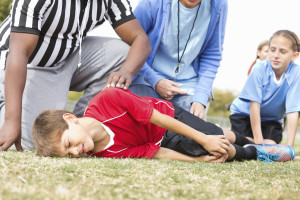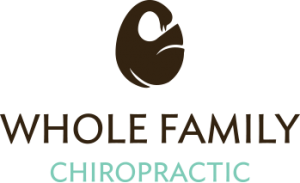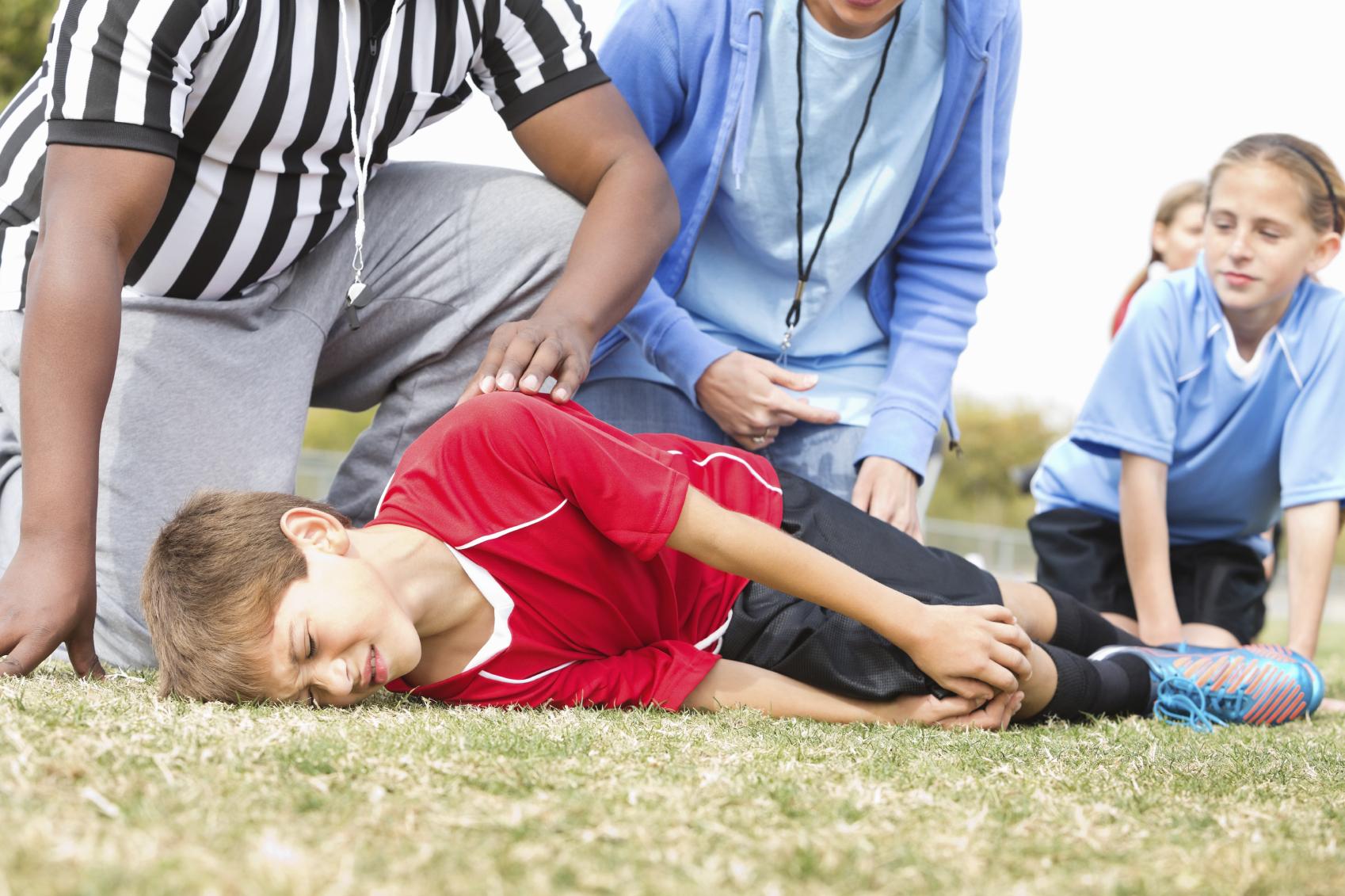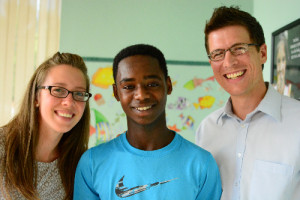Why There is a Struggle
Use Adjustments to Minimize Injuries & Maximize Ability
Expert Strategy

Why There is a Struggle:
WHAT’S GOING ON WITH YOUR CHILD’S REFLEXES, AGILITY, AND RECOVERY FROM FALLS AND CONTACT IN SPORTS
How does going back to school affect your child’s ability to stay injury-free in sports? Why do sports injuries sometimes become an issue during this time?
Sometimes kids struggle when they start up with sports again in the new school year.
First, during the back to school transition, kids’ bodies must readjust to using muscles in a specific way for each sport. In addition, repetitive motion aggravates muscles, tendons, and ligaments.
And then there’s contact! Contact, whether from another player or from your child losing balance or control, is probably the thing we most associate with sports injuries. Slips, falls, bumps, bruises, running into another player, awkward landings—these all have an impact on your child’s body.
What you may not know is that since all your child’s bones, muscles, and organs ultimately connect to the spinal cord via the nerves, a fall that impacts the head, arm, or leg impacts the spine, too. That means a specific injury can have widespread effects on the body—for example, on overall muscle function and balance.
If the communication along the spinal cord between the brain and the muscles and organs is working 100%, your child’s body typically can heal up from injuries and overcome stresses stemming from sports. But if subluxation, or interference in this communication, has occurred as a result of sports stresses or injuries, it means your child’s body has a harder time recovering.
That’s why Whole Family Chiropractic has great results getting athletes back to peak performance: Whole Family specializes in neurological adjustments, which find and remove subluxation!
WFC Benefits:
USING CHIROPRACTIC TO MINIMIZE SPORTS INJURIES AND MAXIMIZE YOUR CHILD’S ATHLETIC ABILITY
How do chiropractic adjustments help your child get fewer sports injuries during the back to school transition?
First of all, specific chiropractic adjustments—meaning, specific to a particular person’s need—are the most effective. And that’s what WFC’s Dr. Tye Moe and Dr. Chelsey Henney are checking before they adjust your child: Where specifically might your child need an adjustment?
Second, those specific neurological adjustments remove subluxation, or interference in the spinal cord and nerves that impedes the body’s natural ability to heal injuries and maximize your child’s reflexes and coordination.
Further, neurological chiropractic adjustments give the body an advantage in performance during the stressful back to school transition period by improving the body’s internal communication, resulting in better spatial control and awareness. This is known as “proprioception.”
Proprioception comes into play with your child’s speed and agility. When proprioception is working properly, your child’s body knows exactly and accurately just where it is in space, so he or she is able to judge, time, or gauge his or her movements better. This prevents injuries from occurring.
Thus, not only do neurological adjustments help your child’s body move faster and react quicker during the back to school transition into sports, they also help him or her recover from injuries and workouts faster.
To sum up, removing subluxation maximizes the ability of your child’s body to process the injury quickly and thoroughly, and that means his or her body heals and repairs more quickly and thoroughly.
Similarly after a workout, when the muscles are being pushed and pulled: Ensuring your child’s body is in proper alignment and able to maintain that alignment will maximize her flexibility and coordination.
Your child’s nerves communicate throughout his or her body so it knows which areas need to repair, recover, and heal quickly. So don’t let your child’s adjustments “slip” during the back to school transition period!
Coming in according to her recommended schedule will help maximize her athletic ability and enable her to enjoy sports more, with faster recoveries and fewer injuries.
If you don’t have a neurological chiropractor, look for one in your neighborhood or call Whole Family Chiropractic for a referral. Your child’s body will thank you!
How Whole Family Chiropractic has Helped:
A Mom’s Perspective
“I brought my son to Whole Family Chiropractic a year ago in June 2014 because he’d had multiple falls in sports and hit his head, and also he cracked his neck a LOT. I also noticed he seemed stressed about wanting to do well at everything, and I felt that contributed to his mental and physical reactions—including his level of frustration and his frequent sports injuries.
“Two months after starting care with Whole Family’s neurological adjustments, I noticed Allemu seemed more relaxed, less ‘overreactive,’ and didn’t get frustrated as much.
“Now, a year after starting care at WFC, my son says his most significant change as a result of the neurological adjustments is that he doesn’t get sports injuries any more. I’ve noticed his muscles are not as tight and he has greater flexibility, too.
“With less stress running through his body, Allemu does well naturally. Across the board—in sports, school, and at home—the adjustments have helped my son with everything!”
–Maggie S., mother of 12-year-old Allemu
Expert Strategy:
TONY KOENS of TIMBERWOLF CROSSFIT
Using Active Movements in Warm-Up and Static Movements ONLY in Cool Down to Minimize Injury and Maximize Performance!
In sports, the common mistake is warming up with static stretches—for example, holding one position without moving, such as bending down and touching your toes.
Instead, warmups should consist of active movements that really work to get your body “warm”!
Full-body movements are active warmup movements. Full-body movements do two things:
- They get your blood circulating through your muscles, and
- They develop a pathway in your brain, a little program for moving your body through its full range of motion.
These two things provide the best chance for minimizing injury and maximizing performance.
If you do a static stretch, always do it after a workout or a practice. At that point, your body is warmed up and can truly benefit from a “stretch and hold” exercise to lengthen muscles and increase flexibility.
The other important tip to minimize sports injuries and maximize performance is to counter the effects of repetitive motions and one-sided muscle movements common to many sports.
In sports that require repetitive motion/frequent one-sided muscle movements—whether it’s tennis, golf, soccer, or softball—your child performs one motion over and over with one side of the body, but often neglects the other side.
To help balance the body out, young athletes should perform 10 reps of their sport’s one-sided motion using their non-dominant side.
If they play softball right-handed, have them swing their bat 10 times left-handed after a game or a practice. If they play soccer and kick mostly with their right foot, have them kick 10 balls with their left foot.
At the end of each “balancing” kick or swing using the opposite side of the body, hold that position for a few seconds to let the “opposite” position sink in to the muscles and the brain.
Not only will this help balance your child’s muscular strength, agility, and flexibility, but it will reduce the chance of injury due to muscle imbalance, and develop more balance in your child’s “brain pathways” for muscles.
And ultimately, developing this brain pathway and muscle balance helps your child perform better in sports!
Click Here to Download a List of All Stretches
Pick one “Before Your Workout” option: ACTIVE stretches move you around, STATIONARY stretches keep you in one place.
Before Your Workout – Stationary Movements
Before Your Workout – Active Movements
And here are after-workout movements to cool you down!
After Your Workout – Static Stretches
Special Bonus! Use these stretches incorporating a stick for warm ups or a daily movement regimen
Full Body Performance – Stick Stretches
How to Balance Your Body After One Sided Sports



